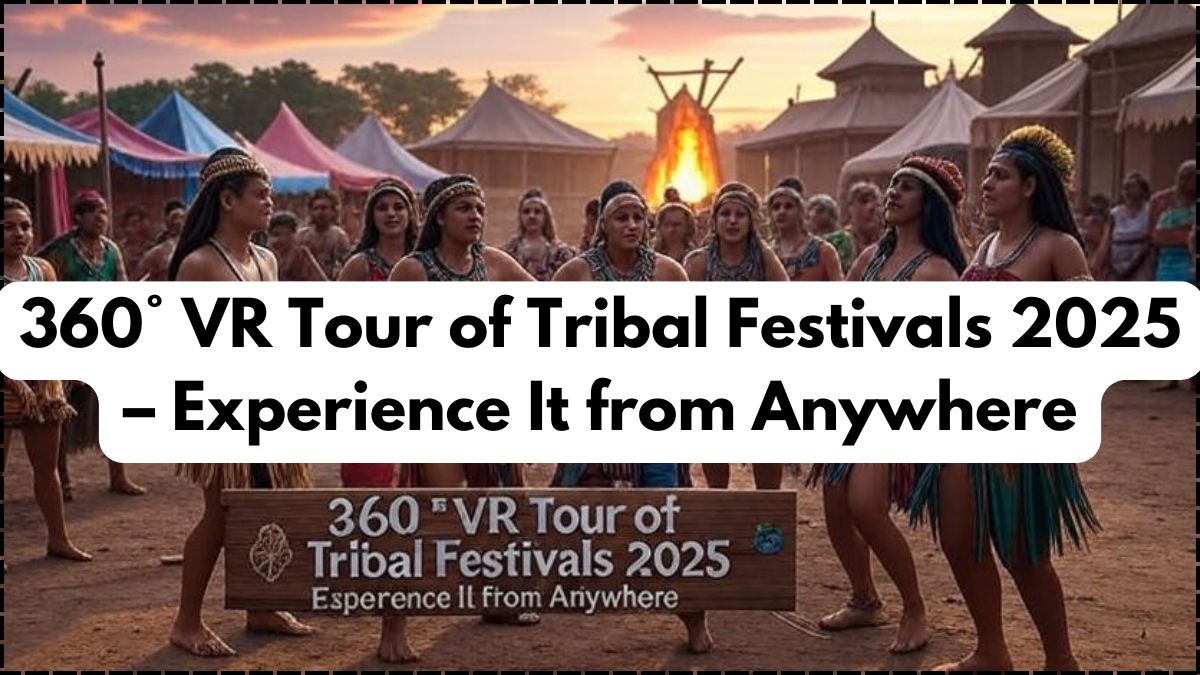The VR Tour Tribal Festivals 2025 project is redefining how people connect with indigenous culture. Traditionally, attending tribal festivals meant traveling long distances, navigating remote terrains, and sometimes missing out due to weather or schedule clashes. Now, with advanced virtual reality, anyone can enjoy a virtual cultural experience of these vibrant celebrations without leaving their home.
From colorful attire to rhythmic drumbeats, every detail of tribal life is captured in 360° video, allowing viewers to look around as if they were actually there. The VR Tour Tribal Festivals 2025 initiative is not just about convenience — it’s about making culture accessible to students, travelers, and cultural enthusiasts around the world.

Why the VR Tour Tribal Festivals 2025 is Special
This project is unique because it doesn’t just record events — it immerses viewers in them. Using high-resolution VR cameras, the team captures festivals from multiple angles, enabling a complete virtual cultural experience. Viewers can explore bustling festival markets, watch ceremonial dances, and even interact with virtual information points to learn about the significance of each ritual.
The VR Tour Tribal Festivals 2025 is also a powerful tool for cultural preservation. By recording traditions in their authentic settings, it creates a permanent archive for future generations while showcasing the beauty of indigenous heritage to global audiences.
How the Virtual Cultural Experience Works
The process involves several stages:
-
On-Site Recording: VR teams visit tribal communities during festivals with portable 360° cameras.
-
Post-Production: Video is edited with immersive soundscapes to recreate the festival atmosphere.
-
Distribution: The final product is uploaded to an app or website where users can access the VR tour.
Features of VR Tour Tribal Festivals 2025
| Feature | Description | Benefit |
|---|---|---|
| 360° VR Capture | Multiple camera setups for full immersion | Feels like being physically present |
| Interactive Hotspots | Clickable points with cultural explanations | Adds learning to the entertainment |
| Multilingual Narration | Narration in English, Hindi, and tribal languages | Accessible to diverse audiences |
| Offline Viewing Option | Downloadable VR files for rural areas | Allows access without constant internet |
These features ensure that the virtual cultural experience is both enjoyable and educational, bridging the gap between tradition and modern technology.
Technology Behind the VR Tour Tribal Festivals 2025
The success of this project lies in combining cultural expertise with cutting-edge VR technology. Advanced stitching software merges footage from different cameras into one seamless 360° view. Binaural audio techniques ensure that when a viewer turns their head in the VR headset, the sound changes naturally, enhancing the virtual cultural experience.
Additionally, lightweight VR headsets make the experience accessible in schools and community centers, even in rural areas. This means that students can learn about diverse tribal customs without the need for expensive travel or logistical arrangements.
Conclusion
The VR Tour Tribal Festivals 2025 is a celebration of technology’s power to connect people with culture. By offering a fully immersive virtual cultural experience, it ensures that tribal traditions are not just preserved but also enjoyed by audiences worldwide. This innovative approach opens the door to cultural exchange, education, and appreciation like never before.
FAQs
How can I watch the VR Tour Tribal Festivals 2025?
You can access it through a dedicated VR app or website compatible with most VR headsets.
Is the VR tour free to view?
Yes, most of the VR Tour Tribal Festivals 2025 experiences are free for the public.
Will the VR tour include all tribal festivals?
Initially, only select festivals are featured, but the coverage will expand each year.
Can schools use the VR tour for cultural education?
Absolutely. The project encourages schools to use the virtual cultural experience to enhance learning about traditions.
Click here to learn more